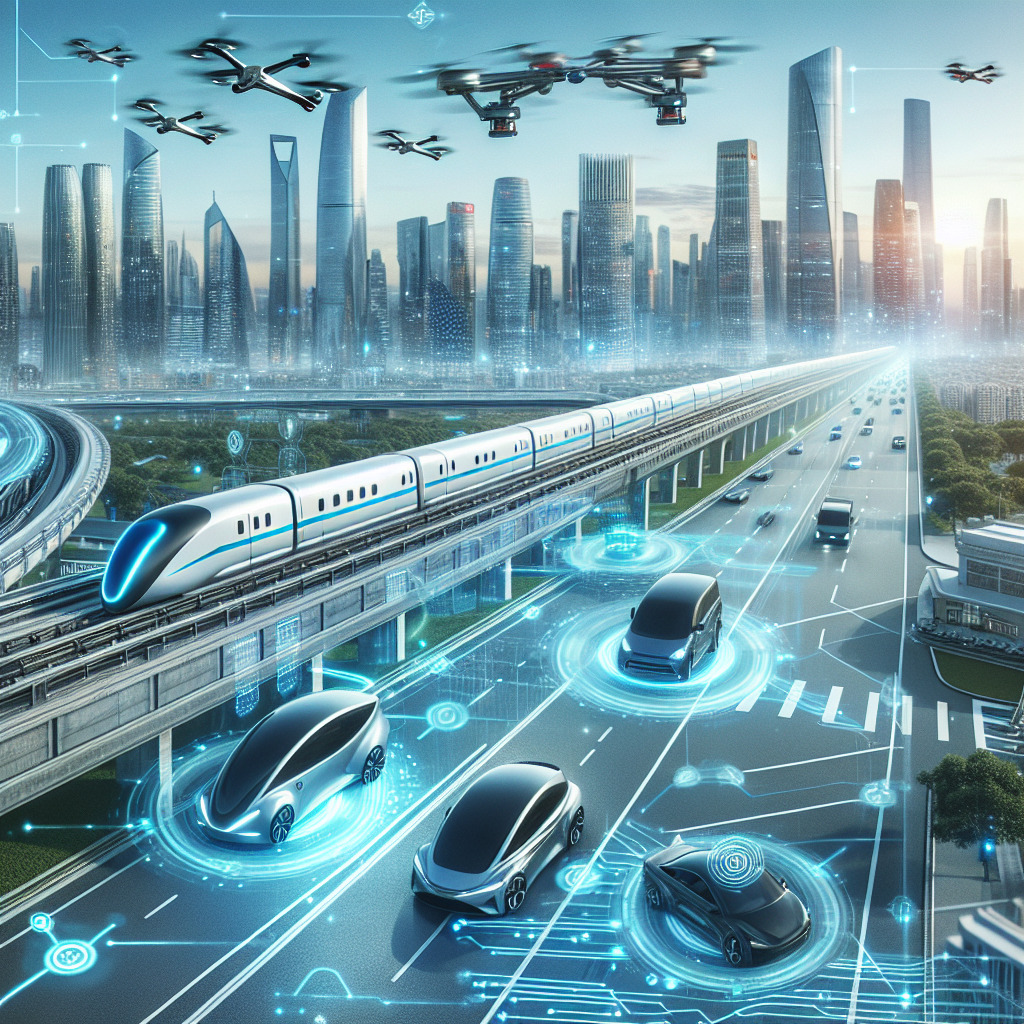The Future of AI and Machine Learning in Transportation
Advancements in artificial intelligence (AI) and machine learning are revolutionizing the transportation industry. From autonomous vehicles to smart traffic management systems, these technologies are transforming the way we move people and goods from one place to another. In this article, we will explore the potential impact of AI and machine learning on transportation and discuss the challenges and opportunities that lie ahead.
Autonomous Vehicles
One of the most exciting applications of AI and machine learning in transportation is the development of autonomous vehicles. These self-driving cars, trucks, and buses have the potential to revolutionize the way we travel, making transportation safer, more efficient, and more convenient.
AI and machine learning play a crucial role in enabling autonomous vehicles to navigate roads, interpret traffic signs, and respond to changing road conditions. These technologies use sensors, cameras, and other data sources to analyze the environment around the vehicle and make real-time decisions about steering, acceleration, and braking.
Companies like Tesla, Waymo, and Uber are already testing autonomous vehicles on public roads, and many experts believe that fully autonomous vehicles will be a common sight on our roads in the near future. These vehicles have the potential to reduce accidents, improve traffic flow, and increase mobility for people who are unable to drive themselves.
Smart Traffic Management Systems
AI and machine learning are also being used to improve the efficiency of traffic management systems. These technologies can analyze vast amounts of data from sensors, cameras, and other sources to predict traffic patterns, optimize traffic signals, and detect accidents or other incidents in real time.
By using AI and machine learning to optimize traffic flow, transportation agencies can reduce congestion, improve safety, and reduce greenhouse gas emissions. These technologies can also help cities and regions better plan for future transportation needs, such as building new roads or public transit systems.
Challenges and Opportunities
While the potential benefits of AI and machine learning in transportation are significant, there are also challenges that must be addressed. One of the biggest challenges is ensuring the safety and reliability of autonomous vehicles. These vehicles must be able to navigate complex and unpredictable road conditions, and they must be able to interact safely with human drivers, cyclists, and pedestrians.
Another challenge is ensuring that AI and machine learning technologies are used in a fair and equitable manner. For example, there are concerns that autonomous vehicles could disproportionately benefit wealthier areas or communities, while neglecting the needs of lower-income communities or communities of color.
Despite these challenges, there are also many opportunities for AI and machine learning to improve transportation in the future. These technologies have the potential to reduce traffic congestion, improve safety, and increase mobility for people who are unable to drive themselves. They can also help cities and regions better plan for future transportation needs and reduce greenhouse gas emissions.
FAQs
Q: How will AI and machine learning impact jobs in the transportation industry?
A: While AI and machine learning have the potential to automate certain tasks in the transportation industry, they also have the potential to create new job opportunities. For example, the development and maintenance of autonomous vehicles will require skilled engineers, technicians, and other professionals. Additionally, AI and machine learning can help transportation agencies better manage their resources and improve customer service, creating new job opportunities in these areas.
Q: Will autonomous vehicles be able to handle all road conditions and situations?
A: While autonomous vehicles have made significant advancements in recent years, there are still challenges to be overcome before they can handle all road conditions and situations. For example, autonomous vehicles may struggle in extreme weather conditions, such as heavy rain or snow, or in complex urban environments with high levels of pedestrian and cyclist traffic. Companies are working to address these challenges through research and development, but it may take some time before fully autonomous vehicles are able to handle all road conditions and situations.
Q: How will AI and machine learning impact public transit systems?
A: AI and machine learning have the potential to greatly improve public transit systems by optimizing routes, schedules, and operations. These technologies can help transportation agencies better predict demand, reduce wait times, and improve the overall customer experience. Additionally, AI and machine learning can help public transit systems better adapt to changing conditions, such as construction or special events, and provide real-time information to passengers about delays or disruptions.
In conclusion, the future of AI and machine learning in transportation is bright. These technologies have the potential to revolutionize the way we move people and goods from one place to another, making transportation safer, more efficient, and more convenient. While there are challenges to be overcome, there are also many opportunities for AI and machine learning to improve transportation in the future. By harnessing the power of these technologies, we can create a more sustainable and equitable transportation system for all.

